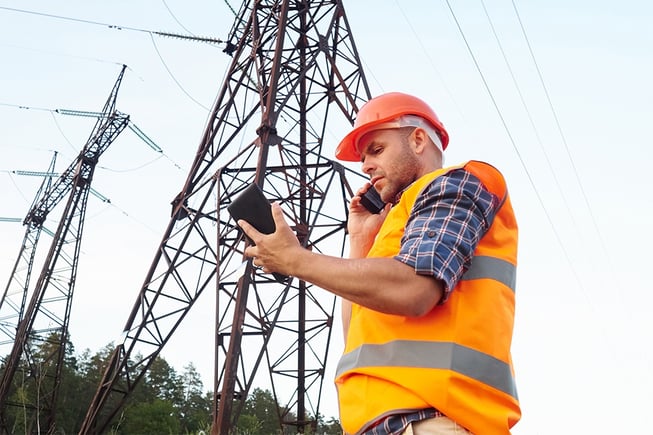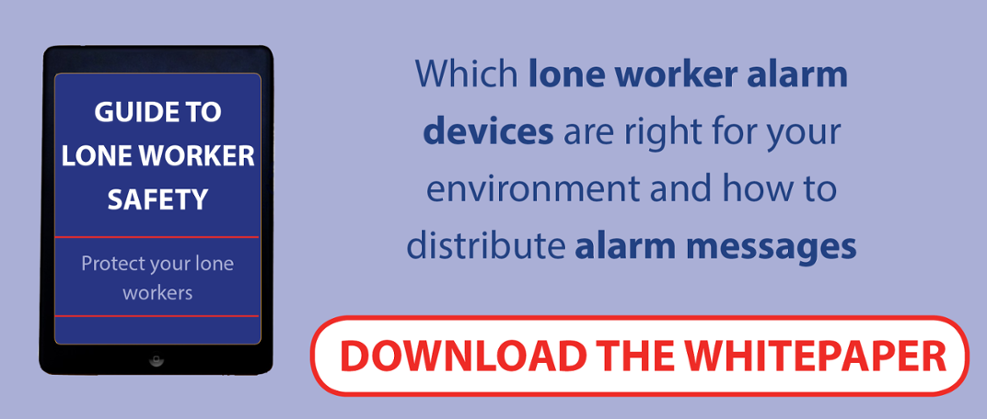
With all the safety aspects that need to be considered in a large corporation, lone worker safety is one that has slightly different needs to most of the others that you have to consider. As well as making sure the environment is safe for a lone worker, there are risks that wouldn’t be applicable elsewhere. In order to lower accidents and get rid of danger, a lone worker policy should be created to assess those risks and how your lone worker can be protected. 
Who Is Vulnerable?
Almost all companies have a certain number of lone workers, whether that is planned or accidental. Planned working can involve the following situations:
• Employees who work in remote parts of a building on a frequent basis
• Employees who work after hours, such as maintenance or cleaners
• Employees who work outdoors in remote areas, for example, agricultural workers
• Contractors who visit the worksite alone
And these can usually be accounted for. What makes it difficult is the ability to account for occasional lone workers, for example:
• Managers who visit areas of the building on an ad hoc basis
• Occasional contractors who visit your worksite
• Employees who arrive earlier or stay later than their normal work day
• Employees who work off site occasionally and will be alone while doing so
There will be conditions that are specific to your workplace, and for a policy to be thorough, every type of lone worker should be accounted for. In this way, each situation can have its own safety aspects considered and assessed so that measures may be put in place to protect the most vulnerable of your workers.
What Threats Are There for Lone Workers?
The fact that a worker is on their own isn’t necessarily a cause for concern. Their safety will be at risk in certain circumstances, and those are the circumstances that need to be highlighted so that they can be eradicated. There will obviously be specific requirements for each type of business, but here are three main issues to consider.
Training
The first point to make sure of is that the lone worker is adequately trained in whatever they are doing or machinery they are using. If an accident happens because of their lack of knowledge, how soon could help be found?
Supervision and Keeping In Touch
Should the worker be supervised or are they capable of working on their own. If so, how often should a supervisor get in touch with them to make sure all is well?
Unexpected Issues
If the worker is off site, will they be subject to violence or other external threat? Is the worker well enough to undertake the task at hand? Sometimes illness can strike unexpectedly and again, it is imperative that help can be sought as soon as possible, not only for their own safety but the continuance of the job at hand or the prevention of any damage to machinery.
Reducing Accidents
Ensuring no accidents ever happen in the workplace is a nice wish, but it takes thought and commitment from everyone to achieve it. It can’t just be the team manager or occasional employees that are concerned with safety. It is the most important example of a team working together, and everyone has to take a part to make sure that you have a safe working environment. In order to accomplish this it helps to have clear standards that everyone follows, and that supervisors and managers enforce. This is never more crucial than when you have lone workers as they have to be responsible for their own safety as a matter of course.
As it is a team exercise, make sure all of the team are onboard and understand why safety checks are important. It is for their safety and wellbeing, not just a useless checklist that needs signing off. If they have understanding of the issues, it can help to promote everyone working towards the same goal. Make sure all the managers set a good example. If everyone is looking for hazards so that they can be eradicated or protected against, and everyone is carrying out the same precautions and checks, it becomes less ‘them and us’ and more of a feeling that everyone is on the same side.
Implementing a Policy for Lone Worker Safety
Because of the many differing problems which affect a lone worker, it is essential a policy is drawn up in each workplace to highlight any risks and the procedures that should be followed to prevent them. The lone worker will be subject to many dangers that are not specific to other staff, and as long as these are recognised and assessed, it will help to protect them in difficult situations.
The adherence to a policy helps in three important ways. As explained, the safety of the lone workers will be ensured, but also it will make sure the company is compliant with important health and safety requirements. Added to this, the knowledge that as a lone worker they are being thought about and valued, is an important part of the wellbeing and happiness the staff member will feel while they go about their job. If they know that they can access help when required, for example, with the use of telecommunication devices and alarms, then it ill make them feel safer, and improve their ability to carry out their job efficiently.
Protecting Your Workers
A lone worker policy should go a long way to protecting the safety of your staff, but only if it is kept up to date and followed by everyone. The main issue will be communication, as by definition a lone worker will be in a remote location on their own. As long as the lone worker can be communicated with on a frequent basis to make sure they are alright, and they have a way of alerting others in the case of emergency, then this goes a long way to ensuring their safety.




